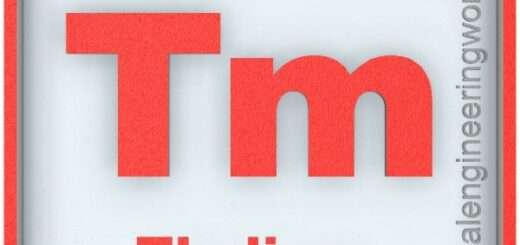Samarium Element Properties and Information

Samarium Element Properties and Information
Samarium is 62nd element on the periodic table. Elements are arranged in the periodic table on the basis of the atomic number. Atomic number is the number of protons in the nucleus of the atom. Samarium has an atomic number of 62. It is located in the Group ‘Lanthanides’ and Period 6 of the periodic table of elements. It is denoted by ‘Sm’. The name is derived from the name of mineral ‘Samarskite’.
Paul-Émile Lecoq de Boisbaudran discovered samarium in 1879 when he was investigating a mineral called samarskite. He extracted didymium from the mineral and then made a solution of didymium nitrate. Upon adding sodium hydroxide, it was observed that the precipitate which formed during the reaction settled down in two stages. He focused his attention on the analysis of the first stage and found that it contained a new element.
Samarium is the fifth most abundant lanthanide present in the Earth’s crust having a presence of 8 ppm. It is found in variety of minerals along other lanthanides, the major minerals being; bastnaesite and monazite.
Physical Properties
- Samarium is a moderately hard metal which has silvery appearance.
- The atomic mass of samarium is 150.35.
- The melting point of samarium is 1072°C.
- The boiling point of samarium is 1790°C.
- The density of samarium is 6900 in S.I. units at 20°C.
- Samarium is third most volatile lanthanide after ytterbium and europium.
- At ambient conditions, samarium has rhombohedral alpha form structure. At 731°C, the crystal structure changes to hexagonally close-packed. At 922°C, the form transforms into body-centered cubic.
- Samarium is a paramagnetic at room temperature and becomes antiferromagnetic when cooled to 14.8 K.
- Naturally occurring samarium is composed of 5 stable isotopes; samarium-144, samarium-149, samarium-150, samarium-152, and samarium-154.
Chemical Properties
- Samarium gradually oxidizes at room temperature. Even if it is kept in mineral oil, it is observed to oxidize gradually. To stop it from oxidizing, it has to be kept in an inert atmosphere.
- Samarium metal reacts with water to form a hydroxide. It reacts slowly with cold water and faster with hot water. The rate of reaction increases with increasing temperature of water.
- Samarium usually forms compounds which have an oxidation state of +3.
- Samarium dissolves readily in sulphuric acid and form compounds which have yellow to pale green appearance in colour.
- Samarium forms oxides, chalcogenides, halides, borides, and organometallic compounds.
Methods of Production
Electrochemical Deposition: Samarium can be separated from the mixture of lanthanides using the method of electrochemical deposition. The electrolyte used in the process is lithium citrate and the electrode is mercury. The samarium oxide can be reduced using barium to obtain samarium in pure form.
Relevance in Chemical and Related Industries
- Catalyst: Samarium compounds acts as useful catalysts in variety of processes namely; decomposition of plastics, dechlorination of pollutants, Friedal-Crafts reaction, desulfonylation reaction, annulations, Barbier reaction, etc.
- Ceramics: Samarium oxides are added in variety of ceramics and glasses to increase their infrared absorption capacity.
Relevance in Other Industries
- Medicine: Samarium-153 is used in cancer treatment. It is used to kill the cancer cells pertaining to lung-cancer, prostrate-cancer, breast-cancer, and osteosarcoma.
- Nuclear application: Samarium-149 is used in control rods in nuclear reactors because it has high cross-section for neutron capture.
- Measurement: Some pressure sensors work by the principle of change in electrical resistivity in samarium monochalcogenides.
Health Effects on Exposure
- Exposure: Causes skin and eye irritation.
- Ingestion: Soluble samarium salts are mildly toxic.
Effects on Surroundings
- Samarium does not pose any threat to plants, animals, and environment.
References:
https://en.wikipedia.org/wiki/Samarium
































